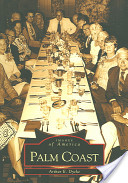Join Attorney David Sweat from the Rue and Ziffra Law Firm for a Steak Night for the Flagler and Volusia County's local biker community. Free steak-dinner will be offered to the first 75 people who register for this event that is taking place at While Eagle Lounge.
Registration required to attend.
Please visit: www.RueZiffra.com or call 386-788-7700. Limited seats available.
You must register --confirmations are on first-come-first-confirmed basis.
A leading blog/portal for the Palm Coast and Flagler County community...
This post is sponsored by:
Tuesday, December 6, 2011
Monday, December 5, 2011
Memory Lane: History of Palm Coast
What is paradise? Before 1969, land that would eventually become the City of Palm Coast was considered by some as nothing more than a big pine-covered swamp.
But when the corporate eyes of ITT/Levitt and Sons looked upon the virtually uninhabited land, they saw 22,000 acres of golf courses, marinas, oceanfront motels, scenic drives, and house lots awaiting the arrival of sun-seeking apioneers.a Marketing strategies targeting urban residents in the North and Midwest offered slices of land cut out of miles of forest, and soon a 500-mile infrastructure of roads, utilities, and sewer lines bound Palm Coast to a future that included becoming the largest planned unit development in Florida history.
Here's a taste from the book, Images of America, by Arthur E. Dycke, published in 2003:
This wonderful book was published in 2003, remains one of the only comprehensive books on Palm Coast's history. It was written by Palm Coast historian Arthur E. Dycke. Perhaps some considered it paradise when life was so secluded that it took a 13-mile drive to buy a quart of milk; perhaps othersfound “the perfect place to live” when errands were shortened by a new shopping center in 1979. Now comprising about two-thirds of Flagler County’s population, Palm Coast continues to attract residents and visitors alike.
With a fascinating collection of photographs and illustrations, Arthur E. Dycke, co-city historian, a director of the City of Palm Coast Historical Society, and an adjunct faculty member at Daytona Beach Community College, presents this whirlwind history of a wilderness turned paradise.
But when the corporate eyes of ITT/Levitt and Sons looked upon the virtually uninhabited land, they saw 22,000 acres of golf courses, marinas, oceanfront motels, scenic drives, and house lots awaiting the arrival of sun-seeking apioneers.a Marketing strategies targeting urban residents in the North and Midwest offered slices of land cut out of miles of forest, and soon a 500-mile infrastructure of roads, utilities, and sewer lines bound Palm Coast to a future that included becoming the largest planned unit development in Florida history.
Here's a taste from the book, Images of America, by Arthur E. Dycke, published in 2003:
This wonderful book was published in 2003, remains one of the only comprehensive books on Palm Coast's history. It was written by Palm Coast historian Arthur E. Dycke. Perhaps some considered it paradise when life was so secluded that it took a 13-mile drive to buy a quart of milk; perhaps othersfound “the perfect place to live” when errands were shortened by a new shopping center in 1979. Now comprising about two-thirds of Flagler County’s population, Palm Coast continues to attract residents and visitors alike.
With a fascinating collection of photographs and illustrations, Arthur E. Dycke, co-city historian, a director of the City of Palm Coast Historical Society, and an adjunct faculty member at Daytona Beach Community College, presents this whirlwind history of a wilderness turned paradise.
Subscribe to:
Posts (Atom)

